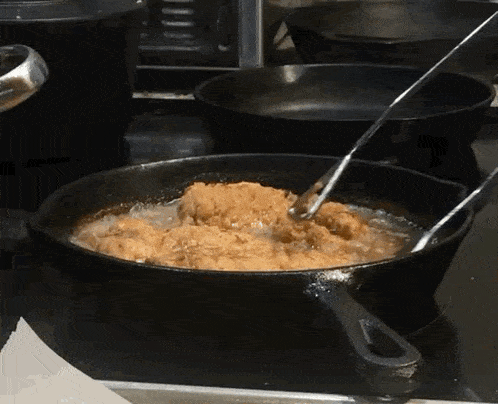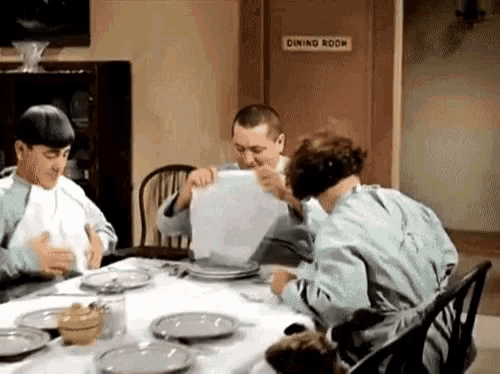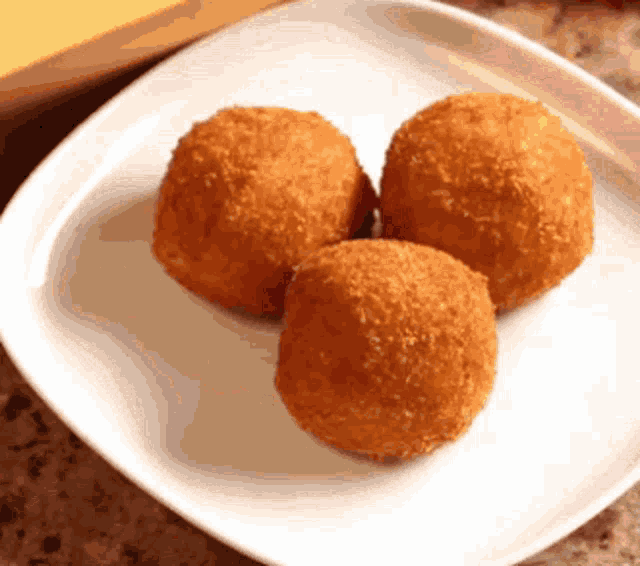
Unsplash

Miércoles, 19 de febrero, 2025.
Las frituras en Colombia son una herencia de mestizaje, una mezcla de influencias indígenas, africanas y europeas que se han transformado en una de las expresiones gastronómicas más vibrantes del país. No hay pueblo, ciudad o región donde no se frían ingredientes básicos hasta convertirlos en delicias crujientes. Es una técnica que llegó con los colonizadores, pero que encontró en los ingredientes locales una identidad propia sin que falten las grasas (aceites, mantequilla, manteca) en distintas cantidades de acuerdo a la receta.

Tenor
Cada fritura tiene su historia y su razón de ser. Algunas nacieron de la necesidad, como las empanadas, que fueron evolucionando desde los pasteles traídos por los españoles hasta convertirse en esos bocados dorados rellenos de carne, papa o guiso que hoy son imprescindibles en cualquier reunión. Otras, como los buñuelos, surgieron del ingenio de los afrodescendientes que adaptaron la técnica de freír masas a ingredientes como el queso costeño, creando esa combinación perfecta entre lo crujiente por fuera y lo esponjoso por dentro.

Tenor
En la costa Caribe, el calor no ha sido impedimento para que la fritura sea parte del día a día. Las carimañolas, hechas de yuca y rellenas con carne o queso, son una muestra de cómo se aprovecharon los productos autóctonos para crear algo delicioso y práctico. En Barranquilla, los fritos son una institución: arepas de huevo, deditos de queso, kibbes y tajadas fritas se encuentran en cada esquina y en cada casa, como un ritual gastronómico que se comparte en familia o entre amigos.

Tenor
El altiplano no se queda atrás. Allí las almojábanas y los pandebonos tienen su contraparte en la versión frita de algunos amasijos, mientras que las papas rellenas y las empanadas con ají picante son la merienda ideal para acompañar una taza de chocolate caliente o un tinto fuerte. En Antioquia, las tajadas de plátano maduro frito no pueden faltar al lado de un buen plato de fríjoles, y en el Valle del Cauca, las marranitas y aborrajados son prueba de que lo frito puede ser un arte en sí mismo.
Lo curioso de las frituras es que, a pesar de no ser el método de cocción más ligero, tienen una presencia reconfortante en la memoria de todos. Son parte de la infancia, de las mañanas de mercado con la familia, de las tardes con amigos en la tienda del barrio. Son el sonido del aceite burbujeando, el olor que despierta el apetito y la textura que cruje con cada mordisco. Son la muestra de que lo simple puede ser extraordinario y de que la comida, más que una necesidad, es un placer que une a la gente sin importar el lugar o el momento.
Escribiré algo más específico sobre las frituras colombianas: la papa rellena.
La papa rellena en Colombia es mucho más que un simple antojito frito. Es una expresión de tradición, ingenio y sabor que ha pasado de generación en generación, adaptándose a cada región y a los ingredientes disponibles. Su origen es difícil de rastrear con precisión, pero se cree que proviene de la época colonial, cuando los españoles introdujeron técnicas de fritura y los pueblos indígenas ya cultivaban la papa como alimento esencial.
En su versión más común, la papa rellena comienza con una base de puré, que luego se moldea alrededor de un relleno sustancioso. En la mayoría de los casos, este relleno es una mezcla de carne molida o desmechada, cebolla, ajo, condimentos y, a veces, arroz o huevo duro picado. Una vez formada, se pasa por huevo batido y se fríe hasta obtener una capa dorada y crujiente que contrasta con el interior suave y lleno de sabor.

Tenor
Cada región le imprime su toque. En el altiplano cundiboyacense, se prefiere con carne de res sazonada con comino y achiote, mientras que en la costa Caribe es común encontrar versiones con pollo o incluso con mariscos. Algunas familias incorporan guisos más elaborados, añadiendo hogao, alcaparras o aceitunas para un sabor más profundo. En Antioquia, no falta el ají casero como acompañante, y en el Valle del Cauca, se disfruta con una buena porción de ají de maní.
Más allá de su receta, la papa rellena es un símbolo de la comida callejera colombiana. En plazas, mercados y esquinas bulliciosas, vendedores ambulantes las ofrecen bien calientes, muchas veces envueltas en servilletas para evitar quemarse los dedos con el primer bocado. No es raro verlas acompañadas de una gaseosa fría o un café, convirtiéndolas en un desayuno o merienda popular entre trabajadores, estudiantes y cualquiera que necesite un bocado reconfortante.
Su preparación en casa suele ser un evento familiar. Es común ver a madres y abuelas amasando con paciencia, mientras los niños esperan ansiosos el momento de la fritura. Es una receta que no solo alimenta el cuerpo, sino que une a la gente alrededor de la cocina, recordando que los platos más sencillos suelen ser los más memorables.
Nuestra cultura gastronómica, como la de otros países, también se basa en frituras, y no negamos que a gran parte de la población mundial nos encantan porque la grasa es transporte de sabor, de eso no hay duda, pero, de lo que tampoco hay duda es que, aunque las frituras tienen un encanto difícil de resistir, son crocantes, sabrosas y evocan recuerdos felices de comidas en familia, reuniones con amigos o meriendas improvisadas en la calle, pero se tranforman o convierten en un hábito frecuente, pueden traer consecuencias que van más allá del placer del momento. No se trata de demonizarlas ni de prohibirlas por completo, porque la alimentación no debería ser una lista de restricciones, sino de encontrar un equilibrio que permita disfrutarlas sin afectar la salud cardiovascular.

Tenor
El problema no está en comer algo frito de vez en cuando, sino en el exceso. Aunque sean preparadas en casa con ingredientes frescos y aceites de mejor calidad, siguen siendo alimentos con alto contenido de grasas que, en grandes cantidades, pueden contribuir a problemas como el colesterol elevado, la inflamación o el sobrepeso. Además, cuando se reutiliza el aceite muchas veces, se generan compuestos que no son los más amigables para el organismo. Es fácil caer en la costumbre de incluirlas en cada comida sin darse cuenta, sobre todo cuando forman parte de la cultura gastronómica de un país.
No se trata de renunciar a los buñuelos en Navidad, a las empanadas con ají los domingos o a una buena arepa de huevo en la playa, sino de entender que todo sabe mejor cuando se come con moderación. Incluir más preparaciones al horno, asadas o al vapor no significa perder el placer de la comida, sino aprender a equilibrar los antojos con opciones que aporten nutrientes y bienestar a largo plazo.
El cuerpo agradece la variedad. Combinar esos momentos de indulgencia con frutas, verduras, proteínas de calidad y una hidratación adecuada es la mejor forma de mantener un buen estado de salud sin sentir que se está sacrificando el gusto por lo que realmente se disfruta. Comer debe ser un placer, pero también un acto consciente. Saber cuándo y cuánto es la clave para disfrutar de todo sin culpa y sin consecuencias innecesarias.
Esta fue una publicación de miércoles.
Gracias por pasarse a leer un rato, amigas, amigos, amigues de Blurt.
Que tengan un excelente día y que Dios los bendiga grandemente.
Saludines, camaradas blurtinenses!!

Wednesday, february 19th, 2025.
In Colombia, frying is a legacy of fusion, a mix of indigenous, African and European influences that have become one of the most vibrant gastronomic expressions in the country. There is no town, city or region where basic ingredients are not fried until they become crunchy delicacies. It is a technique that arrived with the colonizers, but which found its own identity in local ingredients, including fats (oils, butter, lard) in different quantities according to the recipe.

Tenor
Each fried food has its own history and reason for being. Some were born out of necessity, like empanadas, which evolved from the pastries brought by the Spanish to become those golden morsels filled with meat, potatoes or stew that are now essential at any gathering. Others, like buñuelos, arose from the ingenuity of Afro-descendants who adapted the technique of frying dough to ingredients like coastal cheese, creating that perfect combination of crispy on the outside and fluffy on the inside.

Tenor
On the Caribbean coast, the heat has not been an impediment to frying being part of everyday life. Carimañolas, made from yuca and stuffed with meat or cheese, are an example of how local products were used to create something delicious and practical. In Barranquilla, fried foods are an institution: egg arepas, cheese fingers, kibbes and fried slices are found on every corner and in every house, like a gastronomic ritual that is shared with family or friends.

Tenor
The highlands are not far behind. There, almojábanas and pandebonos have their counterpart in the fried version of some doughs, while stuffed potatoes and empanadas with spicy chili are the ideal snack to accompany a cup of hot chocolate or a strong red wine. In Antioquia, fried ripe plantain slices cannot be missed next to a good plate of beans, and in the Valle del Cauca, marranitas and aborrajados are proof that frying can be an art in itself.
The curious thing about frying is that, despite not being the lightest cooking method, they have a comforting presence in everyone's memory. They are part of childhood, of market mornings with the family, of afternoons with friends at the neighborhood store. They are the sound of bubbling oil, the smell that awakens the appetite and the texture that crunches with each bite. They are proof that the simple can be extraordinary and that food, more than a necessity, is a pleasure that unites people regardless of place or time.
I will write something more specific about Colombian fried foods: stuffed potato balls
Stuffed potato balls in Colombia are much more than just a fried snack. It is an expression of tradition, ingenuity and flavor that has been passed down through generations, adapting to each region and the ingredients available. Its origin is difficult to trace precisely, but it is believed to come from colonial times, when the Spanish introduced frying techniques and indigenous peoples were already cultivating potatoes as an essential food.
In its most common version, stuffed potato balls start with a mashed base, which is then molded around a substantial filling. In most cases, this filling is a mixture of ground or shredded meat, onion, garlic, seasonings and sometimes rice or chopped hard-boiled egg. Once formed, it is dipped in beaten egg and fried until it forms a golden, crispy coating that contrasts with the soft, flavorful interior.

Tenor
Each region adds its own touch. In the Cundinamarca-Boyacá plateau, it is preferred with beef seasoned with cumin and achiote, while on the Caribbean coast it is common to find versions with chicken or even seafood. Some families incorporate more elaborate stews, adding hogao, capers or olives for a deeper flavor. In Antioquia, homemade chili is always served as an accompaniment, and in the Cauca Valley, it is enjoyed with a good portion of peanut chili.
Beyond their recipe, stuffed potato balls are a symbol of Colombian street food. In plazas, markets and bustling corners, street vendors offer them piping hot, often wrapped in napkins to avoid burning your fingers with the first bite. It is not unusual to see them accompanied by a cold soda or coffee, making them a popular breakfast or snack among workers, students and anyone who needs a comforting bite.
Preparing fried foods at home is often a family event. It is common to see mothers and grandmothers patiently kneading dough, while children anxiously await the moment of frying. It is a recipe that not only nourishes the body, but also brings people together around the kitchen, remembering that the simplest dishes are often the most memorable.
Our gastronomic culture, like that of other countries, is also based on fried foods, and we do not deny that a large part of the world's population loves them because fat is a transport of flavor, there is no doubt about that, but, what is also not in doubt is that, although fried foods have a charm that is difficult to resist, they are crispy, tasty and evoke happy memories of family meals, meetings with friends or improvised snacks on the street, but if they are transformed or become a frequent habit, they can bring consequences that go beyond the pleasure of the moment. It is not about demonizing them or banning them completely, because food should not be a list of restrictions, but about finding a balance that allows us to enjoy them without affecting cardiovascular health.

Tenor
The problem is not eating something fried from time to time, but rather eating too much of it. Even if they are prepared at home with fresh ingredients and better quality oils, they are still foods with a high fat content that, in large quantities, can contribute to problems such as high cholesterol, inflammation or being overweight. In addition, when the oil is reused many times, compounds are generated that are not the most friendly to the body. It is easy to fall into the habit of including them in every meal without realizing it, especially when they are part of the gastronomic culture of a country.
It is not about giving up fritters at Christmas, empanadas with chili on Sundays or a good egg arepa on the beach, but rather understanding that everything tastes better when eaten in moderation. Including more baked, roasted or steamed preparations does not mean losing the pleasure of food, but rather learning to balance cravings with options that provide nutrients and long-term well-being.
The body appreciates variety. Combining those moments of indulgence with fruits, vegetables, quality proteins and adequate hydration is the best way to maintain good health without feeling like you are sacrificing taste for what you really enjoy. Eating should be a pleasure, but also a conscious act. Knowing when and how much is the key to enjoying everything without guilt and without unnecessary consequences.
This was a wednesday post.
Thanks for stopping by to read for a while, Blurt friends.
Have a great day and may God bless you greatly.
Regards, comrades blurtarians!!
Translation: Deepl.com
